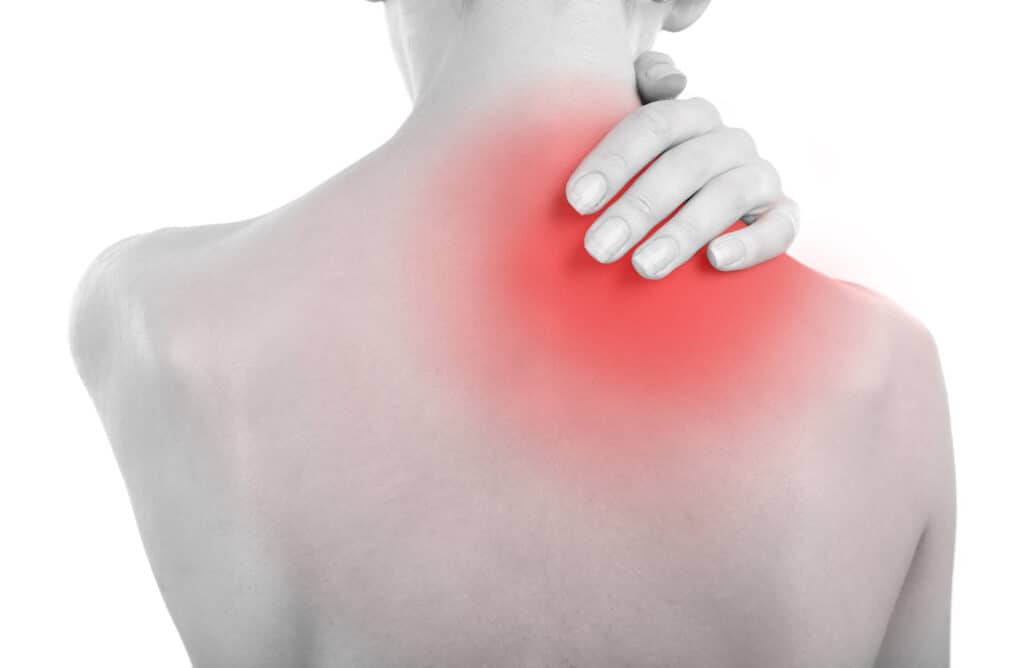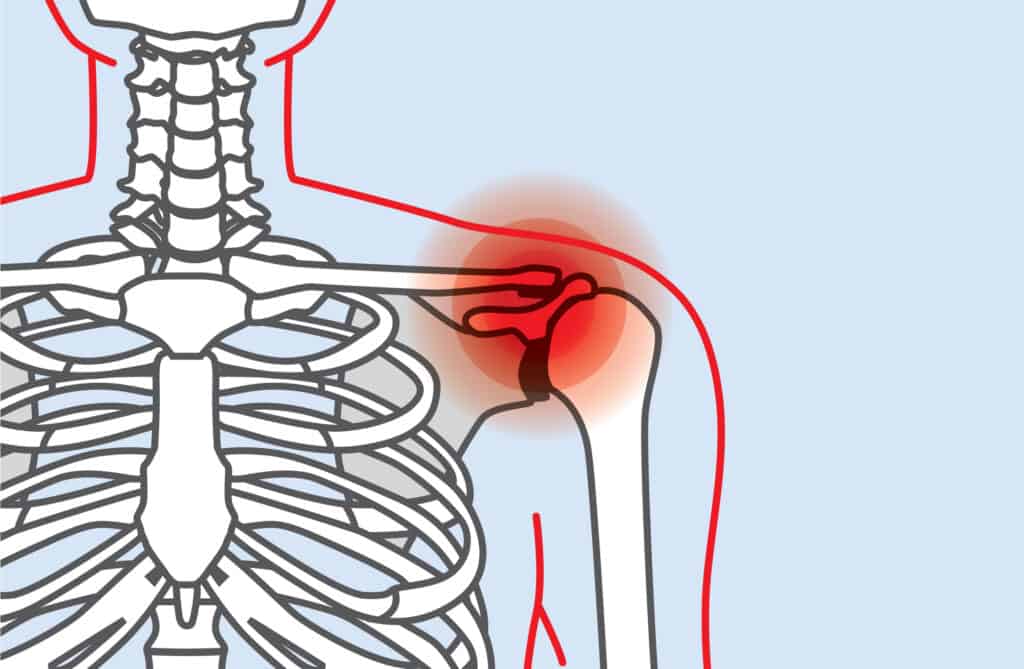Is your shoulder pain a source of stress and discomfort?
Have you tried physical therapy, chiropractic, stretching, saunas, yoga, ice, heat, and hot tubs, and nothing works to fix the pain?
Are you stuck and losing hope?
The “shoulder” is made up of bones and joints with strengthening and stabilizing muscles and tendons and LOTS of fascia (connective tissue) that allows you to move your arm in a range of different motions – from lifting and carrying to throwing and playing sports.
That’s when it’s working well, but a range of issues like instability or underlying problems in the joints, ligaments, or the all-important fascia can hamper the level (or lack) of mobility you have in the shoulder, causing stiffness, pain, and discomfort.
Traditional physical therapy can sometimes fix shoulder pain. Still, the problem returns with a vengeance in most cases because it doesn't find and fix the root cause.
Myofascial release therapy and the RE3 Recovery Program are different.
More Blogs From Release Works
Understanding The Fascial System: An In-Depth Exploration
Have You Been Told That Your Back Pain Is Chronic?
What Is The Difference Between Massage And Myofascial Release?
The Shoulder: In Detail

To understand the root cause of your pain and how to fix it, you first need to understand the shoulder and how it works.
We won't bore you with a full scientific lecture on the anatomy and inner workings of the shoulder (even though we live for this level of detail). Here’s a quick summary instead.
Firstly, it might (or might not) surprise you to know that your “shoulder” is actually made up of three bones, the humerus (upper arm bone), the scapula (shoulder blade), and the clavicle (collarbone).
The humerus sits inside a socket called the “glenoid” in the shoulder blade. The well-known “rotator cuff” – a common source of shoulder pain (made up of muscles, tendons, and layers of fascia) fixes and stabilizes these bones together by stretching over the top of the humerus bone and connecting to the scapula.
So, the shoulder isn’t just one bone or joint. It’s much more complicated than that. So, in our experience - unless you experience a direct injury to one of the bones, muscles, or tendons in the shoulder - the source of chronic shoulder pain is much more likely to come from the protective and stabilizing connective tissue, the fascia.
What Causes Shoulder Pain?

What doesn’t cause shoulder pain? We believe everything can contribute to shoulder pain – from old ankle injuries, stress, depression, and trauma to postural misalignment, chronic muscle tension, and the resulting myofascial restrictions.
However, the cause is different for everyone and unlikely to be just ONE thing.
But traditional allopathic medicine has a more reductionist view than us and our fellow myofascial release therapy practitioners.
They do site serious nerve issues, infections, or tumors as some of the other rarer causes of shoulder pain.
But they completely ignore the layers and layers of living tissue, "the fascia," and the chronic stress and inflammation that can occur in this web of connective tissue that encases EVERYTHING in the body – from the muscles, joints, and eyeballs to the tendons, ligaments, and nerves - as a potential source and/or contributory factor of shoulder pain.
Instead, they wholly focus on the bones and muscles (far too simplistically in our view) and classify shoulder pain into the following groups:
Various kinds of arthritis can cause shoulder pain, but Osteoarthritis is among the most common. It occurs due to aging and the degradation of the joints.
The symptoms include stiffness, pain, and swelling. It can also occur in younger people due to injuries or repetitive professions.
Tendon Tears:
The tendons in the shoulder may tear due to a serious injury or aging that causes them to degenerate. Wear and tear can also be a major cause for the tendons to get damaged.
A tendon tear may be minor, or in some cases, it may completely detach from the bone. Bicep injuries and rotator cuff tears are the most common tendon-related injuries.
Fracture:
When the bones break, it’s a fracture. The most common shoulder fractures include the shoulder blade, upper arm bone, and collarbone.
In younger patients, injuries due to sports or accidents are the most common cause of fractures to the shoulder. In the elderly, most shoulder fractures occur due to falls.
Instability:
This happens when the upper arm bone moves out of the shoulder socket. It can be due to overactivity or any kind of trauma.
It is referred to as shoulder dislocation and may be partial or complete. In the latter, the complete ball moves out of the socket.
A shoulder dislocation can frequently occur when the shoulder's muscles, ligaments, and tendons tear or become loose.

Bursitis:
Bursa are tiny sacs that contain fluid in joints all over the body, including the shoulder. They cushion tissues and bones and decrease friction between bones and muscles.
However, overuse causes swelling and inflammation in the bursa in the rotator cuff and the shoulder blade. As a result, the shoulder tissues become inflamed, which is very painful.
Impingement:
This happens when you lift the arm, and the top part of your shoulder blade creates friction or impinges on the bursa and tendons of the rotator cuff.
It can cause both tendinitis and bursitis, which restricts movement and is very painful.
Tendinitis:
Tendons are thin cord-like structures inside the shoulder that link bones to muscles. Tendinitis occurs when the tendon is inflamed.
The most affected shoulder tendons are rotator cuff tendons and a single bicep tendon.
The rotator cuff is four kinds of small muscles with tendons that cover the bone of the upper arm and keep it in position. The rotator cuff influences both ranges of motion and shoulder stability.
These are two kinds of tendinitis:
- Acute tendinitis: Repetitive activities at work or while playing sports is a leading cause of tendonitis.
- Chronic tendinitis: This condition develops due to aging and wear and tear or degenerative conditions like arthritis and is chronic.
But even if one of these issues is at play for you and contributing to your shoulder pain. We know that traditional physical therapy focusing on individual bones and tendons (as if they're suspended in space and don't connect to anything) is highly unlikely to fix the issue for good and prevent it from returning.
To do this effectively, you need the holistic, whole-body approach that myofascial release therapy and our RE3 Recovery Program specifically deliver.
How The RE3 Recovery Program Helps Fix Shoulder Pain

“The three-phase approach to healing that re-stores, re-sets, and re-trains your body and mind so you can 100% recover from chronic shoulder pain, reduce stiffness, and improve mobility."
When you suffer from shoulder pain for a long time, you get stuck in a "pain cycle ."But what is a pain cycle?
Put simply, the term “pain cycle” means that the pain causes your autonomic nervous system (fight or flight) to get stuck on high-alert mode > this then increases body-wide tension, which makes the pain worse.
The resulting increase and deepening of tension signal your body is in even more danger. Hence, the “pain cycle” continues in a non-stop, self-perpetuating loop.
The RE3 Recovery Program interrupts this loop and re-sets your nervous system, which opens your mind, shoulders, and body to treatment and change.
This Re-set process is an essential first step. But, unfortunately, it's also the step that traditional physical therapists miss.
Instead, moving straight to manipulating and forcing the joints to realign and building muscle strength (creating even more stress and tension before the body is ready).
At Release Works, we use a combination of guided breathwork, mindfulness, and gentle hands-on therapy to reassure your body that it is safe to “uncoil” from the brace position before we do anything.
When your body and shoulders finally relax (depending on how long they have been under physical/mental/emotional stress), we move onto the Re-Store stage of the recovery program.
Here we work to restore the free-flowing fluidity of your connective tissue (fascia) system throughout your entire body, not just your shoulders.
We track back from your painful shoulder to uncover the root cause(s) and gently dissolve the restrictions, knots, and rigid parts that we find along the way to restore plasticity, flexibility, and ease.
The final step in the RE3 Recovery Program is the Re-Train stage. This stage of the process is where your body and shoulders relearn everything as we work with awareness to help you strengthen better movement patterns and posture.
The result is no more shoulder pain and a happier, stronger, and more relaxed body that is less susceptible to injury, pain, and discomfort.

